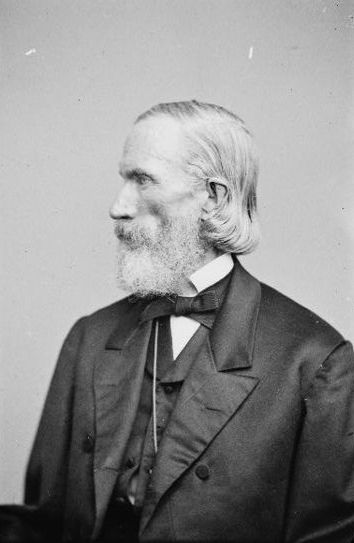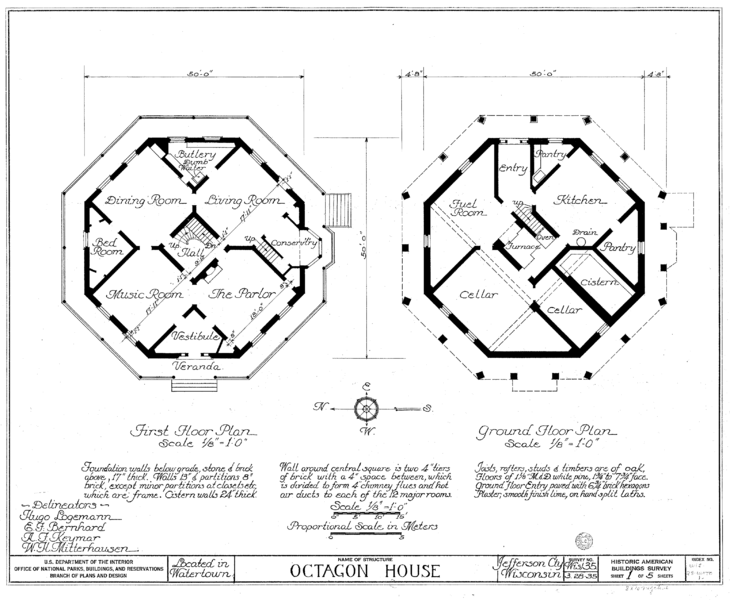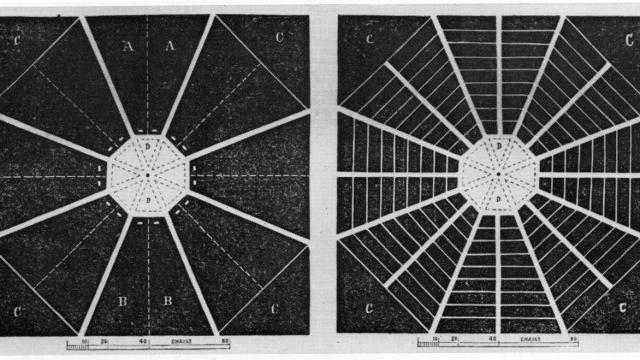If you begin looking into the history of vegetarianism, you’ll find that Kansas pops up over and over again. The state, now much better known for BBQ, was once the planned site for a particularly striking vegetarian utopia: Octagon City. Its strict geometric plan was a grand, city-scale expression of a mid-18th century fad for octagon houses.
You won’t find eight radial roads leading to an octagonal town square in Kansas today, however, because Octagon City never came to be. Even by utopian society standards, it failed spectacularly when most of its original settlers left after just a few months.
But its ambitious geometric plan reflected a larger movement afoot in the mid-19th century, when many idealistic reformers looked to architectural plans — octagon houses, hexagon cities, oval communal mansions — as the geometric scaffolding for a better society. They believed that the morals and values of a society could be reflected in a city’s layout, and physical surroundings could bring about change. These architectural plans were also a transparent, unmediated form of expression compared to political rhetoric. “There was a 1:1 relationship between what the plans represented or showed in an image and the effects it would produce in society,” said Irene Cheng, an architecture professor at California College of the Arts.
The Rise of Octagons

The man most responsible for the popularity of octagon houses is Orson Squire Fowler, a phrenologist, amateur architect and head of a publishing empire, the last of which is awfully convenient when you have ideas to spread. His 1848 book, The Octagon House: A Home For All, or A New, Cheap, Convenient, and Superior Mode of Building laid out his geometric vision.
The argument for an octagon house was scientific — or at least vaguely pseudoscientific. Octagon houses minimised surface area to volume, which meant lower costs for building materials and heating. There would be fewer dark corners and more space. The most efficient shape would be a sphere, of course, but its curves were impractical and octagons were the closest approximation. (That didn’t stop another architect, Wallace Neff, from building bubble houses, which is an unrelated but fascinating story.)
The superior physical shape of the house was supposed to translate into superior health for the people who lived inside. There was better sunlight and better air. “Literally, the house is seen as a prosthetic to help you advance economically and be stronger,” says Cheng. Over a thousand octagon houses were built in the United States and Canada, a number of which still stand today.
The Utopia That Never Was
Octagon houses were popular in their own right, but Henry Clubb, the founder of Octagon City, elevated the idea to an even grander level. One might see why Clubb, with his strict moral views on vegetarianism and slavery, would be drawn to the geometric plan that promised a better society. While Fowler himself was not a political activist, the company behind Octagon City had its headquarters in his offices. The city plan at the top of this post was published in one of his phrenology journals.
Clubb himself was a reformer, vegetarian activist, and a reporter for Hearst’s newspaper, but unfortunately for his utopian city, he was no city planner. Idealism quickly drained away from the project. When enough vegetarians could not be recruited, they allowed meat-eaters in. Settlers who did come with the promise of a vibrant town, gristmill and saw mill already built found only one log cabin and some tents. Most settlers left after just a few months in the summer of 1856. The promised octagon houses and barns were never built.
The saddest tale of its fate would be summed up in a newspaper headline from 2007: “Vandalism forces historian to quit post after 15 years.” Then 85-year-old Bill Slane had spent $US415 of his own money replacing flags that kept getting stolen from a small memorial to the Octagon City. He eventually gave up, and the last physical markers for Octagon City disappeared.
Octagon Houses Today


Photo and floor plan of the Watertown Octagon House, one of the most famous. Wikimedia Commons
There may be no trace of Octagon City anymore, but octagon houses still remain standing in the United States and Canada. A couple of enthusiasts maintain a stunningly comprehensive online catalogue of octagon houses built between the mid 19th century and 1920.
For the most part, these houses are architectural curiosities, just an unusual shape sticking out in the neighbourhood. Even if you didn’t know the history and ideology connected to these buildings, you could get walk into one and get a sense of why they might have inspired a certain type of idealism.
“Living in an octagon house is like living in a sundial,” said the modern-day owner of an octagon house. “My house is constantly being lit from different directions through all 19 windows, even in the closets. All the fresh air circulating through the house and natural light is indeed a healthy, good feeling. You feel good about yourself even on the grayest day.”
